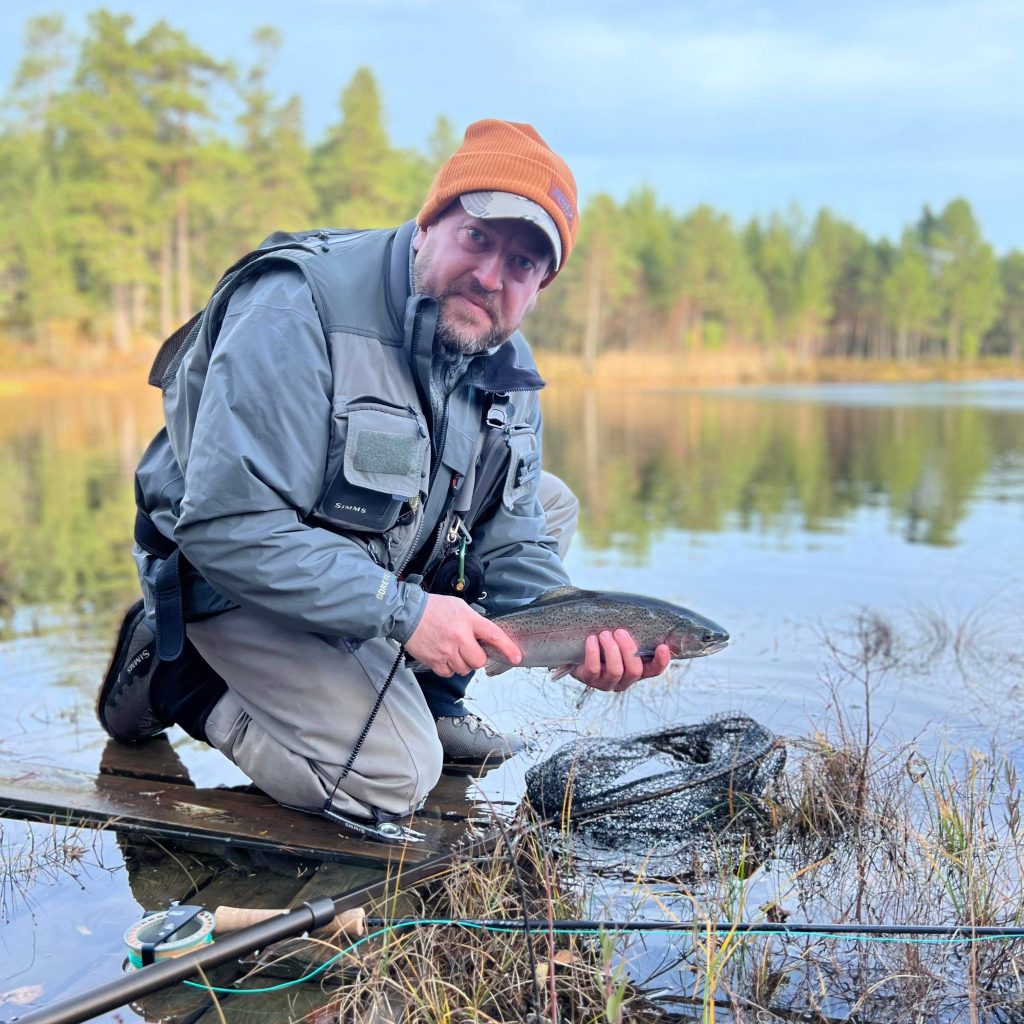
As you know from last week’s blog, a handful of us were at Hökensås Sportsfiske last weekend. Søren, Martin and myself together with some friends, Kirsten, John and Klaus and we had a great time. We enjoyed the fantastic nature reserve that houses the some 25 lakes that Hökensås Sportsfiske manages. And of course the high quality fishery and fish. Stocked lakes, yes, but far from easy. We ended on Sunday with dead calm conditions, which made the fishing quite difficult for everyone (except Håkan and Marcus, of course). I spent the better part of the day, wasting time I’ll never get back trying to catch a trout on a dry fly.

Let me begin with extending our thanks to Marcus Hermansson-Thorvald and Morten Frederiksson on Hökensås Sportsfiske for housing us, guiding us and generally being the good guys that they are. Hökensås is Håkan’s home water, so we enjoyed his expertise and intimate knowledge of the lakes.
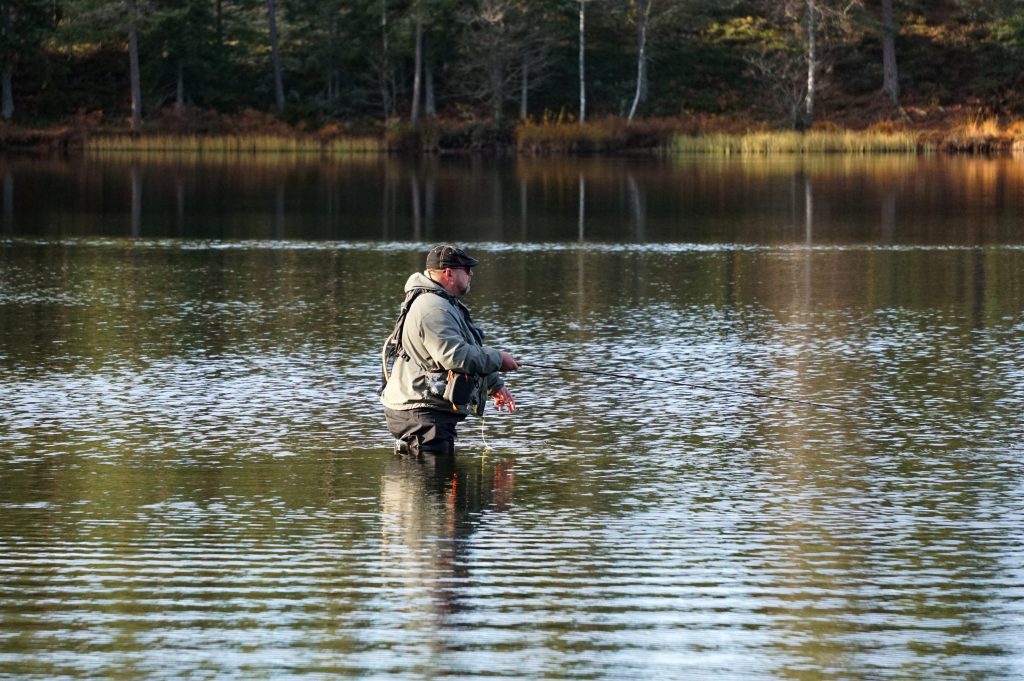
But there was a bit more to the weekend than fishing. Håkan and Marcus held fly tying clinics in the evening. Marcus and I gave a couple of hours of casting instruction Saturday morning and of course, the most time was spent fishing with plentiful lunches served lake-side.
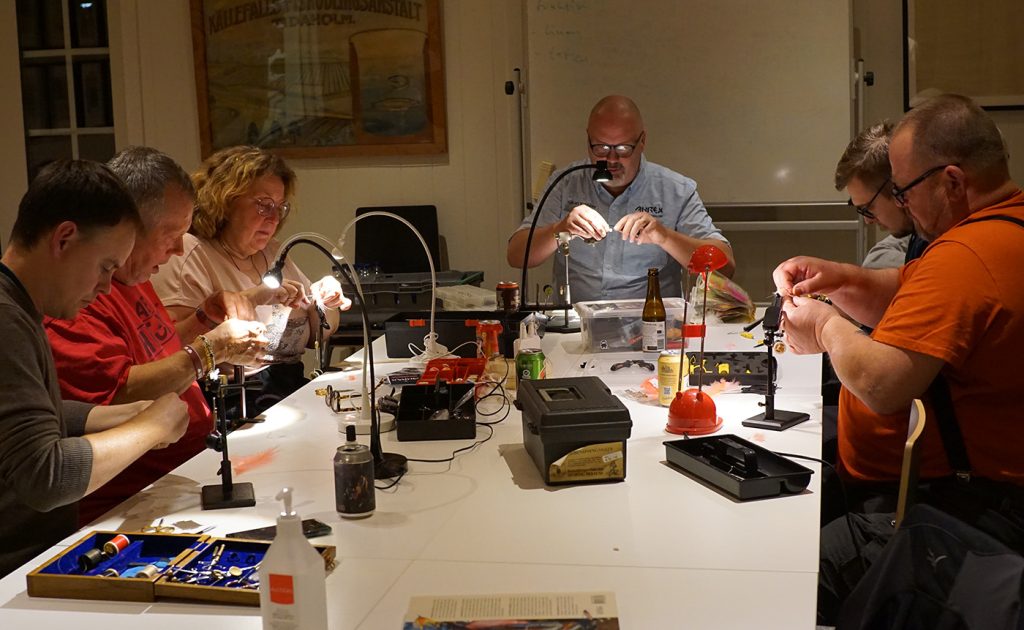
Morten Frederiksson had arranged for the entire team, us and the other guests, to join him on an evening walk along a small stream, Hjoåen (Hjo is the name of the small city it flows through and ån means river or stream). In such there’s nothing special about Hjoån. It runs into the huge lake, Vättern and acts as spawning grounds for the lake trout that inhabits Vättern. What’s special about the river is that there were very few trout spawning in it in the early 1980s. Morten Frederiksson grew up in Hjo and spent much of his time along the river and since then, he has been involved in a project with the sole focus of restoring Hjoån back to a pristine environment for the trout. And what they have achieved is fantastic!

And not only Hjoån, because by creating a passage around the last obstacle (a mill and its pond) they have allowed the trout access to a myriad of small streams that feed into Mullsjön (Lake Mull) and thus opening miles and miles of spawning ground. Through positive dialogue with land owners, local authorities, heritage authorities, the commercial fishermen on Lake Vättern, citizens of Hjo, biologists and many, many more, they have created something quite unique.
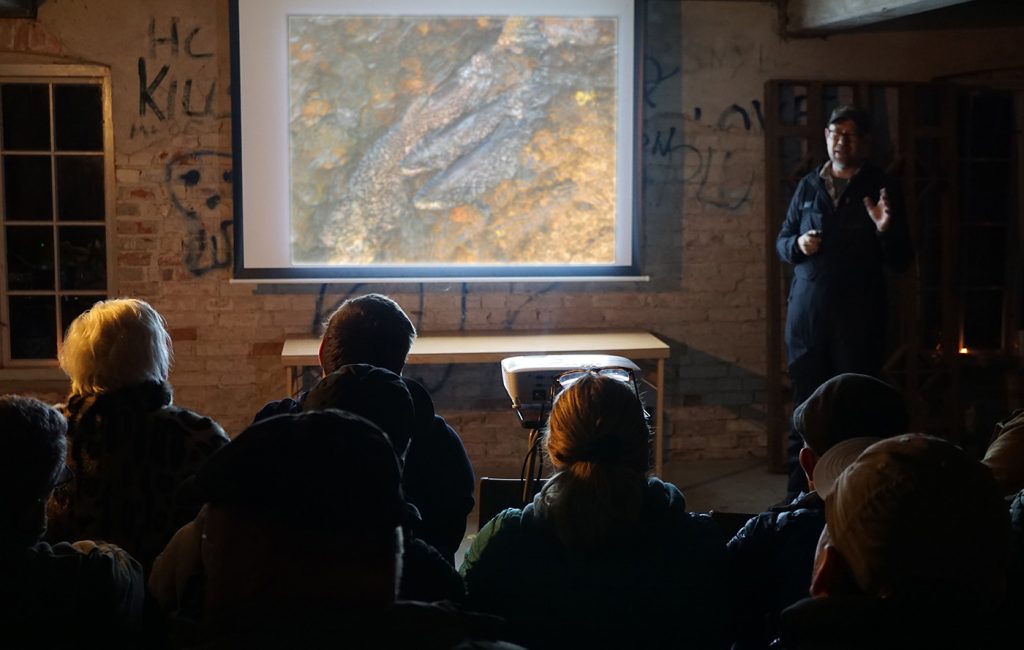
First of all an incredible spawning area for the trout on Lake Vättern. The population of trout is now 100% natural. But what’s just as important for the succes is that there has been a focus on creating something that the citizens of Hjo and the entire area are proud of and enjoy. This is a key factor in lifting a project like this far above and beyond “just” restoring a stream. Hjoån is now an incredibly beautiful stream with a fresh current, tonnes of big stones, spawning grounds, dead trees, twists and turns and a varied habitat that provides both perfect spawning grounds as well as slower parts, where the small trout prefer to live. All of this was presented to us by Morten Frederiksson in a talk in the mill before we walked out.

On that evening we walked from the mill downstream about 500m and then walked slowly back up in groups with guides. This is what they call a Trout Safari, a registered trademark, actually. I have seen spawning fish before, but this, this was something special. We counted 130 spawning trout on those 500m of Hjoån. The average size was probably about 2kg, some smaller and some significantly bigger. Beautiful, fall coloured trout with huge tail fins holding on the spawning redds, slowly digging and getting ready to secure the coming generations of Vättern trout.
These Trout Safaris are held a couple of times a week during spawning season, where everyone can join guides with flash lights and walk up the stream, seeing an amazing spectacle of spawning trout. Only the guides are allowed to shine lights on the fish and they do so only for very short periods of time not to disturb the fish unnecessarily. As we walked they seemed quite unaffected both by us and the lights, but great care is taken to give the trout peace. And yet these Trout Safari are essential in getting the locals to understand what a special piece of nature they have running through their city. Of course the entire project has created a wonderful, green lung that can also be enjoyed for a simple walk, even for those who couldn’t care less about spawning trout.
The evening ended with a fantastic feast in the old mill with Italian inspired cuisine, by local chef, flyfisherman and flytier, Matthias Lagerqvist. He served an exquisite risotto with different cured hams and delicious cheeses. A perfect way to end a good day of fishing and a Trout Safari.

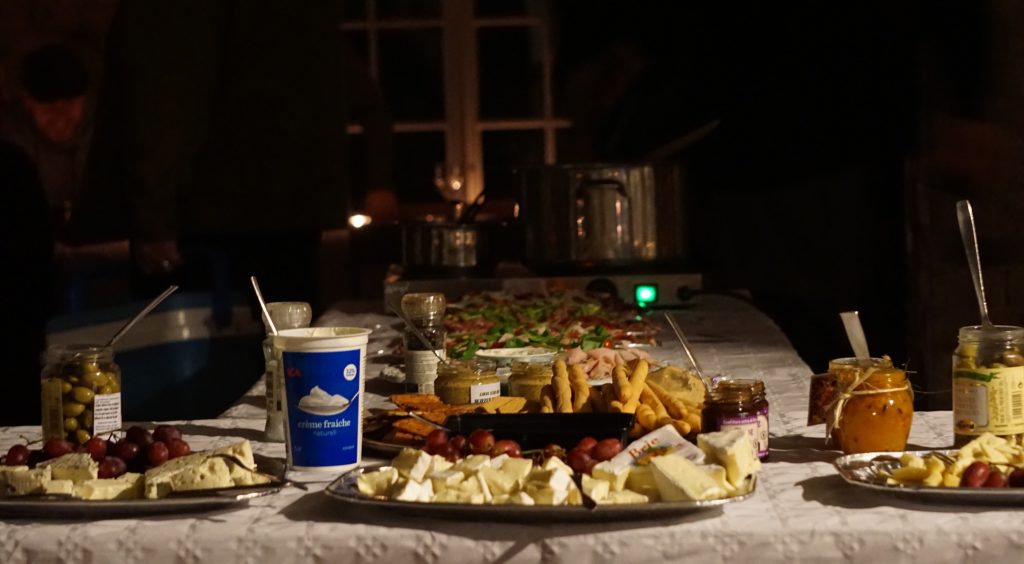
A great thank you to everyone who made this a very memorable weekend for all of us.
